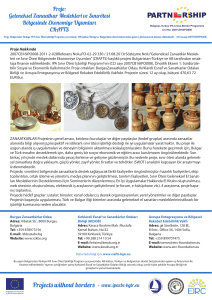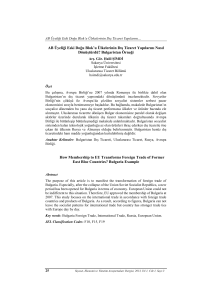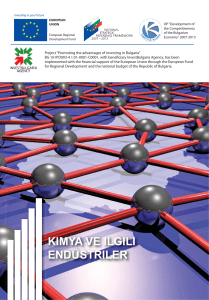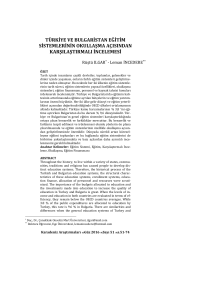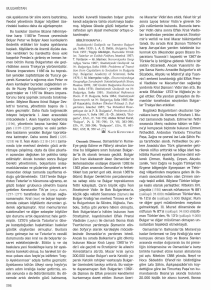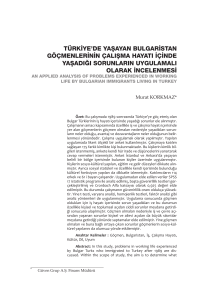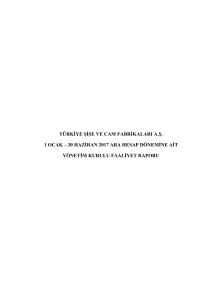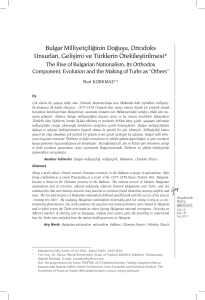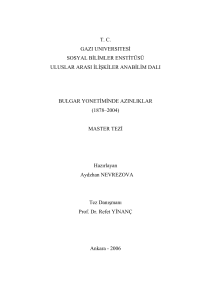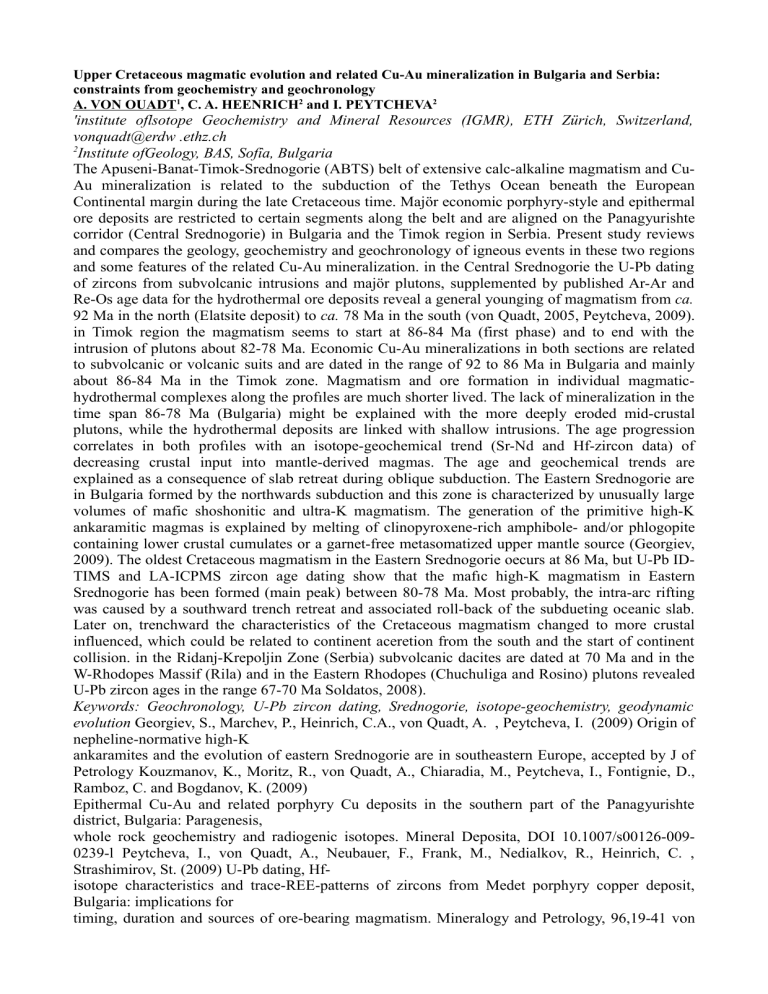
Upper Cretaceous magmatic evolution and related Cu-Au mineralization in Bulgaria and Serbia:
constraints from geochemistry and geochronology
A. VON OUADT1, C. A. HEENRICH2 and I. PEYTCHEVA2
'institute oflsotope Geochemistry and Mineral Resources (IGMR), ETH Zürich, Switzerland,
vonquadt@erdw .ethz.ch
2
Institute ofGeology, BAS, Sofîa, Bulgaria
The Apuseni-Banat-Timok-Srednogorie (ABTS) belt of extensive calc-alkaline magmatism and CuAu mineralization is related to the subduction of the Tethys Ocean beneath the European
Continental margin during the late Cretaceous time. Majör economic porphyry-style and epithermal
ore deposits are restricted to certain segments along the belt and are aligned on the Panagyurishte
corridor (Central Srednogorie) in Bulgaria and the Timok region in Serbia. Present study reviews
and compares the geology, geochemistry and geochronology of igneous events in these two regions
and some features of the related Cu-Au mineralization. in the Central Srednogorie the U-Pb dating
of zircons from subvolcanic intrusions and majör plutons, supplemented by published Ar-Ar and
Re-Os age data for the hydrothermal ore deposits reveal a general younging of magmatism from ca.
92 Ma in the north (Elatsite deposit) to ca. 78 Ma in the south (von Quadt, 2005, Peytcheva, 2009).
in Timok region the magmatism seems to start at 86-84 Ma (first phase) and to end with the
intrusion of plutons about 82-78 Ma. Economic Cu-Au mineralizations in both sections are related
to subvolcanic or volcanic suits and are dated in the range of 92 to 86 Ma in Bulgaria and mainly
about 86-84 Ma in the Timok zone. Magmatism and ore formation in individual magmatichydrothermal complexes along the profıles are much shorter lived. The lack of mineralization in the
time span 86-78 Ma (Bulgaria) might be explained with the more deeply eroded mid-crustal
plutons, while the hydrothermal deposits are linked with shallow intrusions. The age progression
correlates in both profıles with an isotope-geochemical trend (Sr-Nd and Hf-zircon data) of
decreasing crustal input into mantle-derived magmas. The age and geochemical trends are
explained as a consequence of slab retreat during oblique subduction. The Eastern Srednogorie are
in Bulgaria formed by the northwards subduction and this zone is characterized by unusually large
volumes of mafic shoshonitic and ultra-K magmatism. The generation of the primitive high-K
ankaramitic magmas is explained by melting of clinopyroxene-rich amphibole- and/or phlogopite
containing lower crustal cumulates or a garnet-free metasomatized upper mantle source (Georgiev,
2009). The oldest Cretaceous magmatism in the Eastern Srednogorie oecurs at 86 Ma, but U-Pb IDTIMS and LA-ICPMS zircon age dating show that the mafıc high-K magmatism in Eastern
Srednogorie has been formed (main peak) between 80-78 Ma. Most probably, the intra-arc rifting
was caused by a southward trench retreat and associated roll-back of the subdueting oceanic slab.
Later on, trenchward the characteristics of the Cretaceous magmatism changed to more crustal
influenced, which could be related to continent aceretion from the south and the start of continent
collision. in the Ridanj-Krepoljin Zone (Serbia) subvolcanic dacites are dated at 70 Ma and in the
W-Rhodopes Massif (Rila) and in the Eastern Rhodopes (Chuchuliga and Rosino) plutons revealed
U-Pb zircon ages in the range 67-70 Ma Soldatos, 2008).
Keywords: Geochronology, U-Pb zircon dating, Srednogorie, isotope-geochemistry, geodynamic
evolution Georgiev, S., Marchev, P., Heinrich, C.A., von Quadt, A. , Peytcheva, I. (2009) Origin of
nepheline-normative high-K
ankaramites and the evolution of eastern Srednogorie are in southeastern Europe, accepted by J of
Petrology Kouzmanov, K., Moritz, R., von Quadt, A., Chiaradia, M., Peytcheva, I., Fontignie, D.,
Ramboz, C. and Bogdanov, K. (2009)
Epithermal Cu-Au and related porphyry Cu deposits in the southern part of the Panagyurishte
district, Bulgaria: Paragenesis,
whole rock geochemistry and radiogenic isotopes. Mineral Deposita, DOI 10.1007/s00126-0090239-l Peytcheva, I., von Quadt, A., Neubauer, F., Frank, M., Nedialkov, R., Heinrich, C. ,
Strashimirov, St. (2009) U-Pb dating, Hfisotope characteristics and trace-REE-patterns of zircons from Medet porphyry copper deposit,
Bulgaria: implications for
timing, duration and sources of ore-bearing magmatism. Mineralogy and Petrology, 96,19-41 von
Quadt, A., Moritz, R., Peytcheva, I. , Heinrich, CA. (2005) Geochronology and geodynamics of
Late Cretaceous magmatism
and Cu-Au mineralization in the Panagyurishte region of the Apuseni - Banat - Timok -Srednogorie
belt (Bulgaria). Ore
Geology Reviews 27, p. 95-127 Soldatos, T., A. Koroneos, B. Kamenov, I. Peytcheva, A. von
Quadt, G. Christofıdes, X. Zheng, H. Sang. 2008 New U-Pb and
Ar-Ar mineral ages for the Barutin-Buynovo-Elatia-Skaloti-Paranesti batholith (Bulgaria and
Greece): Refınement of its
debatable age. - Geochemistry, Mineralogy and Petrology, 46,85-102.
Bulgaristan ve Sırbistan'da Geç Kretase mağmatik evrimi ve ilintili Cu-Au cevherleşmesi: jeokimya
ve jeokronolojiden kaynaklanan kısıtlamalar
Apuseni-Banat-Timok-Srednogori (ABTS) yaygın kalk-alkali mağmatizma ve Cu-Au cevherleşme
kuşağı, Tetis Okyanusunun Geç Kretase'de Avrupa kıta kenarının altına dalma-batması ile ilintilidir.
Kuşak boyunca, ekonomik değer taşıyan porfiri-tip ve epitermal cevher yatakları belirli
segmentlerle sınırlıdır ve Bulgaristan'da Panagyurishte koridorunda (Orta Srednogori), Sırbistan'da
ise Timok bölgesinde dizilmiştir. Bu çalışma, bu iki bölgedeki mağmatizmanm jeolojisi, jeokimyası
ve jeokronolojisini ve ilintili Cu-Au cevherleşmesinin bazı özelliklerini gözden geçirir ve
karşılaştırır. Orta Srednogori'de sığ derinlikteki intrüzyonlardan ve büyük plütonlardan alman
zirkonların U-Pb tarihle(ndir)mesi ve bunu tamamlayan, hidrotermal cevher yataklarına ilişkin
yayınlanmış Ar-Ar ve Re-Os yaş verileri, mağmatizmada, kuzeyde (Elatsite yatağı) 92 milyon
yıldan güneyde yaklaşık 78 milyon yıla (von Quadt, 2005; Peytcheva, 2009) bir gençleşmeyi açığa
çıkarır. Timok bölgesinde mağmatizma günümüzden 86-84 milyon yıl önce başlamış (ilk evre) ve
yaklaşık 82-78 milyon yıl önce gelişen plüton intrüzyonları ile sona ermiş gibi görünür. Her iki
kesimdeki ekonomik Cu-Au cevherleşmeleri sığ derinlikli intrüzif ya da volkanik dizilerle ilintilidir
ve Bulgaristan'da 92 ile 86 milyon yıl önceleri, Tmok zonunda ise yaklaşık 86 ile 84 milyon yıl
önceleri arasına tarihlenirler. Profiller boyunca ayrı(k) mağmatik-hidrotermal karmaşıklardaki
mağmatizma ve cevher oluşumu çok daha kısa ömürlüdür. Günümüzden 86-78 milyon yıl önceleri
arası zaman diliminde cevherleşme yokluğu (Bulgaristan), hidrotermal yataklar sığ intrüzyonlar ile
ilintiliyken, daha derince aşınmış kabuk-ortası plütonları ile açıklanabilir. Her iki profilde yaş
gelişimi, manto-türevi magmalar içine azalan kabuk malzemesi girişini gösteren izotop-jeokimyasal
eğilim (Sr-Nd ve Hf-zirkon verileri) ile ilişkilidir. Yaş ve jeokimyasal eğilimler, oblik dalma-batma
sırasında dilimin geri çekilişinin bir sonucu olarak açıklanabilir. Bulgaristan'daki Doğu Srednogori
yayı kuzey-yönlü dalma-batma ile oluşmuştur ve bu zon alışılmadık hacımda mafik şoşonitik ve
aşırı-K mağmatizması ile karakterize edilir. İlkel, yüksek-K içerikli ankaramitik magmanın
oluşumu, klinopiroksence zengin amfibol ve/ya da filogopit içeren alt kabuk kümülatlarmm erimesi
ile ya da garnet-içermeyen, metasomatize olmuş bir üst manto kaynağı ile açıklanabilir (Georgiev,
2009). Doğu Srednogori'de en yaşlı Kretase mağmatizması 86 milyon yıl önceye tarihlenir; ancak,
U-Pb ID-TIMS ve LA-ICPMS zirkon tarihlemeleri, Doğu Srednogori'de mafik, yüksek K-içerikli
mağmatizmanm 80-78 milyon yıl önceleri arasında (zirve noktası) geliştiğini gösterir. Büyük
ihtimalle, çukurluğun güney yönlü gerilemesi ve bununla ilintili olarak dalan-batan okyanusal
kabuk diliminin geriye kayması yay-içi riftleşmeye neden olmuştur. Daha sonra, Kretase
mağmatizmasmm çukurluk eğilimli özelliği daha çok kabuksal etkiler taşıyan özelliğe dönüşmüştür;
bu, güneyden kıta eklenmesi ve kıta çarpışmasının başlaması ile ilintili olabilir. Ridanj-Krepoljin
zonunda (Sırbistan), sığ derinlikli dasitler 70 milyon yıl önceye tarihlenmiştir; Batı Rodop
Masifindeki (Rila) ve Doğu Rodoplardaki (Chuchuliga ve Rosino) plütonlar, 60-70 milyon yıl
aralığına yayılan U-Pb zirkon yaşları verirler (Soldatos, 2008). Anahtar Kelimeler: Jeokronoloji, UPb zirkon tarihle(ndir)mesi, Srednogori, izotop jeokimyası, jeodinamik evrim

